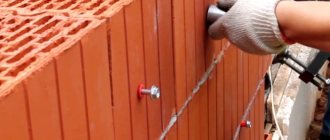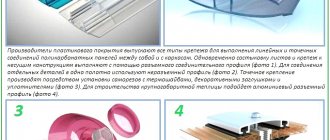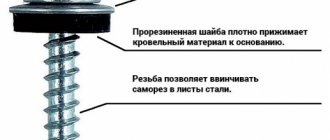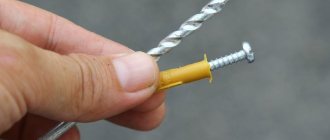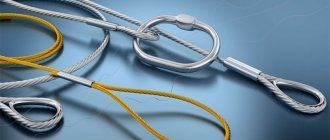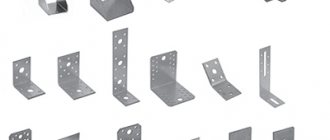All summer residents are familiar with the benefits of durable and high-quality greenhouses. This also applies to other structures made of polymer. But to obtain a high-quality result, just purchasing polycarbonate sheets will not be enough. You also need to take care of the fasteners. One option is a thermal washer for polycarbonate.
Proper use of thermal washers in compliance with all recommendations will allow you to achieve the desired result - your structure will be strong and reliable. Thermal washers are an opportunity to eliminate several problems at once related to heat loss, leakage, or dust or small debris getting into the cavities of the polymer.
Thermal washer for polycarbonate
Features of polycarbonate
When working with polycarbonate, the methods inherent in conventional roofing materials are not suitable. In this case, some of its features should be taken into account.
Cellular polycarbonate
- The performance of polycarbonate differs significantly from the characteristics of materials of natural origin. This is due to the fact that polymer plastic is obtained as a result of organic synthesis.
- Polycarbonate is highly durable, so working with it requires high-quality tools.
Technical characteristics of polycarbonate
- When working with polymer you should be extremely careful. High strength does not make it invulnerable, as it remains very fragile.
- The optimal temperature range for working with this material ranges from -45 to +120 degrees. Any temperature movement outside the range will make working with polycarbonate more difficult. When exposed to extreme temperatures, the material will break down.
- The coefficient of thermal expansion of polycarbonate exceeds 1.5 percent, which makes some changes in the way it is attached. If sheets are tightly fastened at low temperatures, they can rupture, and at high temperatures they can swell.
- The appearance of polycarbonate is very attractive, so you need to use fasteners that will not affect its aesthetic qualities.
- The fastening elements used must have a high level of anti-corrosion protection. This is due to the fact that they will be exposed to weather influences.
Polycarbonate fastening
Fasteners must have anti-corrosion protection
There are a large number of work requirements, but thanks to modern technologies, there is an excellent solution to “fastening” issues - the use of thermal washers, with the help of which the problem of point fastening of polycarbonate sheets fades into the background.
Thermal washer for polycarbonate (universal)
Prices for cellular polycarbonate
cellular polycarbonate
Thermal washer - what is it?
Thermal washers are special fastening parts used for point fixation of polycarbonate sheets. These elements are used for metal, wood and plastic structures.
Installation of polycarbonate to a metal frame
When developing thermal washers, all the characteristics of the polymer fabric were taken into account, including:
Fasteners
Installation of polycarbonate can be carried out using various elements: screws, washers, special structures. They are selected based on the purpose of the future structure and the materials used to create the frame.
Washers and screws
How to fasten polycarbonate - different fasteners can be used for this. Carpentry or galvanized screws from 19 to 50 mm are popular. Their choice depends on the following factors:
- washer size – decorative models with a thickness of 3-15 mm, standard silicone models with a thickness of up to 5 mm;
- installation diagram - for wooden sheathing, fasteners are 50 mm, in fastenings without overlap, 19 mm screws are used, with an overlap - 25 mm;
- slab thickness - when using a window structure, the thickness of the side slabs is 6-8 mm, for the roof 10 mm, for a standard frame the thickness of the material is no more than 10 mm.
For the basic methods, a universal hexagonal self-tapping screw with a drill at the end is used. Designed for aluminum structures. Can also be used for wood, but strength characteristics are lost. On the opposite side, ordinary carpentry screws can be used.
Washers for fastening
The only type of fastener for all types of polycarbonate is a screw with a large washer made of durable plastic or a self-tapping screw. Screws with washer are used to create decorative structures. Not suitable for greenhouses due to the centering sleeve. The simplest option for tightly fastening sheets is provided by a snap-on split profile. The slabs are placed on the mounted profile and secured with an overlay film. Bolts with nuts can also be used, but using them is not very convenient - the work takes more time and you can destroy the slab by over-tightening the nut.
How to attach polycarbonate to a metal frame:
- Experts recommend using fasteners with washers and plugs that have an O-ring and convex washers.
- They are recessed into the holes with a leg.
- The panel is pressed tightly, harmonious in appearance, and moisture does not get inside.
Self-tapping screws or other similar elements must be purchased separately. Polycarbonate washers are produced in various colors, they are stronger, thermal washers are transparent.
Washers with plugs
Polypropylene washers consist of a plug, a cover (in different colors) and a seal. They have no UV protection, quickly fade and lose strength. Not recommended for use indoors or on shaded roofs. Their main advantage is the price.
Metal washers are used mainly for metal frames and large areas. They do not loosen and provide high-quality fastening. They are concave, a gasket is placed in the mold, fastened with bolts or screws. Washers with gaskets ensure maximum tightness and prevent moisture from penetrating into the fabric.
Metal washers
To fasten plastic under a canopy or indoors, you can use self-tapping screws with a gasket or a thin washer. In the most optimal cases, washers can be abandoned altogether. Be sure to wear an additional gasket under the washer for outdoor structures.
Profile
The connecting profile allows you to fasten the sheets to the frame and to each other.
The profile is made from identical sheet material and can have a thickness of 4-16 mm.
A thermal gap of 3 mm is left inside between the profile and the sheet.
During the installation process, perforated or sealing tape is used, which is attached to the ends.
Then the plastic is installed directly in the profile.
The profile itself comes in several types:
- connecting;
- one-piece;
- end;
- detachable.
All options have their own characteristics and characteristics that must be taken into account when choosing the type of design.
The boards can be mounted in aluminum, plastic or polycarbonate profiles. The profile itself has a different cross-section and is marked in Latin letters. The slabs installed in the grate can be secured with sealant. But in strong winds this will be a weak connection
It is important to choose a high-quality sealant that will retain its elasticity and strength for several years.
To know how to properly attach polycarbonate to a greenhouse, you need to remember several important rules:
- sealant is used only on the upper slopes;
- avoid any bending of the sheets when using thermal washers - this leads to the appearance of holes and loss of the tightness of the structure;
- arched structures are secured from below with perforated tape, which will protect against air escape, ruptures and damage to the sheets themselves;
- metal profile is used only for structures larger than 2 m;
- Aluminum is a good sealant and is the base, rubber seals.
Thermal washer design
The design of the thermal insulation washer includes three main parts.
Thermal washer for fastening cellular polycarbonate
- Leg , the length of which can reach 16 mm. In some cases, you can find longer options.
- A special seal that acts as a polymer fastener. It also protects the structure and the sheet cells themselves from moisture getting inside.
- Top plug . People call it a “hat”. The list of tasks of the plug includes improving the appearance of the building (when constructing a greenhouse, the use of plugs gives it a more aesthetic appearance), although many builders forget about this important detail. In addition, the “hats” protect the structure from moisture or debris. In this case, they play the role of a protective cover.
Complete set of thermal washer for polycarbonate
Why are thermal washers needed?
High-quality fastening of polycarbonate to a frame made of any material is always accompanied by the use of thermal insulation washers. Every salesperson in a hardware store knows about this, so when purchasing polymer you should be advised to purchase thermal washers. Their quantity depends on the number of sheets used, but it is better to buy elements with a reserve.
Important! Some people are sure that purchasing thermal washers is nothing more than a waste of money. This is not true, because it is impossible to go broke on such purchases. The standard factory packaging contains 50 elements (their color is the same in the packaging).
Polycarbonate point fixing
Insulating properties
Every summer resident is well aware of the need to maintain temperature conditions in the greenhouse. In winter it is very difficult to do this due to various cracks or leaks between the sheets. In this regard, severe frosts can harm the plants being grown, which greatly complicates the situation. With a correctly installed thermal insulation washer for fastening polycarbonate sheets, this problem can be solved. Moreover, the effect will be much better than when using a homemade seal.
Monolithic polycarbonate - properties and application
To learn everything about the use and properties of monolithic polycarbonate, be sure to read this article! In addition, we strongly recommend reading the material on how to cut polycarbonate with your own hands.
Operational period
If you use regular mounting bolts without thermal washers (bare bolts), then the likelihood of external liquids getting into the cavities of the polycarbonate sheets increases significantly. The term “external liquid” means sap from trees growing above the greenhouse, or rainwater with dust. It is extremely difficult to remove accumulated dirt, because this requires dismantling the structure, washing and blowing with compressed air. In this regard, few people do such cleaning, so all these liquids remain in the sheets forever. This leads to deterioration of the properties of the material and its gradual destruction.
The constructed structure, reinforced with thermal washers, will be much stronger, which will not give strong winds any chance of destroying it. The greenhouse owner does not have to worry about individual sheets of polymer being torn off the structure under the influence of strong hurricane winds.
Thermal washer
Aesthetic side
Although many do not pay attention to this point, the appearance of a polycarbonate structure still plays a big role. A greenhouse will look much nicer in a beautiful design, for which there are thermal insulation washers. When selecting parts to match the color of polycarbonate sheets, the overall picture will remain undisturbed, and the fasteners themselves will be invisible.
Thermal washer
Corrosion protection
Plastic washers can protect metal self-tapping bolts from the formation of corrosive build-ups. This will preserve the appearance and structure for many years. Of course, you can avoid such troubles by purchasing better quality screws. But no one is safe from counterfeiting, because for very decent money you can buy a low-quality product. The situation is similar with the purchase of self-tapping bolts. It’s better not to spend money on expensive bolts, but buying thermal insulating washers is the most effective option.
Plastic washers protect metal screws from corrosion
Prices for thermal washers
thermal washers
Materials for fastening panels
To solve the problem of how to attach polycarbonate to metal, you need to use the following:
- Different types of profiles, including end, corner, connecting, wall and ridge.
- Fastening elements in the form of thermal washers and mini-washers.
- Different types of plugs.
- Adhesive tape for edges, including perforated tape for bottom edges.
- Profile seals.
Types of profiles and their purpose
Using end profiles, the edges of the polycarbonate are protected, with the short shelf always located on the outside. Connecting profiles can be detachable universal or solid H-shaped. They are designed to join the edges of panels
It is important to remember that only detachable profiles can be attached to the frame. The corner profile allows you to connect elements at right angles. The wall profile makes it possible to tightly adhere the panel to the wall. Can be used as an end profile. A ridge profile is required to connect panels at the roof ridge, provided that the elements are connected at an angle greater than 90.
Types of thermal washers
Fastening polycarbonate to metal is done with different types of thermal washers. These fasteners may differ in the following ways:
- Design features allow us to distinguish between individual and universal thermal washers. In the first case, the element has a length in accordance with the thickness of the sheet, which prevents pinching or deformation of the polycarbonate. The second option does not have a leg, therefore, can be used for material of any thickness.
- Depending on the material of manufacture, the fasteners can be made of stainless steel (for covering large areas), polycarbonate (ensure the tightness of the connection without damaging the panel), polypropylene (for work indoors or in the shade).
- Mini-washers are used for panels of small thickness.
Types of washers
For the production of thermal washers, various materials are used, differing from each other in various parameters (strength level, transparency and service life).
There are three main materials used in the manufacture of this product:
- stainless steel (stainless steel);
- polycarbonate;
- polypropylene.
The service life of manufactured fasteners may vary. This will depend on the material chosen for production. For example, products made of polypropylene will last no more than 4 years, those made of polycarbonate - up to 15 years.
Steel thermal washers
Stainless steel thermal insulation washers are usually used for work in windy areas. They are also used if the coverage area of the object being constructed is too large. Often steel is installed on a profile made of metal. This gives the structure a beautiful and organic look. The thickness of the thermal washer reaches 0.8 mm, and the diameter is 33 mm. The inner part of the washer, intended for the self-tapping screw, has a diameter of no more than 6 mm.
Thermal washer for fastening polycarbonate metal
The shape of the steel washer is similar to a small plate, in the recess of which there is a polyurethane gasket. This is a very durable material, and therefore durable (such a gasket can last more than 40 years).
Important! The metal of the washer and its size do not guarantee reliable fastening of plastic sheets. Correct construction is important - only this factor can affect the reliability of the structure. To strengthen the coating, it is advisable to screw thermal washers every 20-30 cm.
Alternative option. Thermal washer "Spacer" rubber with a metal ring
Polypropylene thermal washers
Products made from polypropylene are produced in both colored and transparent versions. This allows you to create color harmony when constructing a greenhouse or any other structure made from polycarbonate sheets. The diameter of the fastener, made of polypropylene, is 35 mm, and the height is 12 mm. Polypropylene thermal insulating washers allow the use of self-tapping screws whose thickness is no more than 6 mm.
Polypropylene thermal washers
Among all the advantages of polypropylene washers, it is worth highlighting their low cost and beautiful appearance. But before buying, you need to familiarize yourself with their disadvantages. For example, the material used is “afraid” of ultraviolet rays. Under the influence of ultraviolet radiation, polypropylene gradually deteriorates (complete destruction will take approximately 3-5 years). This will cause the sheet covering to vibrate strongly from the wind, and, as a result, will collapse over time.
It is advisable to use polypropylene washers in places protected from direct sunlight (inside buildings or in shaded areas).
Polycarbonate thermal washers
Products made of polycarbonate are practically not inferior in their characteristics to steel thermal insulating washers.
Polycarbonate thermal washers
Polycarbonate thermal washers have many advantages.
- Aesthetics . Products made from polycarbonate have a beautiful appearance, which allows you to complement the overall design of the structure.
- Optimal washer design . Thanks to this, the connection of polycarbonate sheets is strong, and their structure remains intact.
- Resistance to strong temperature fluctuations . The influence of extreme cold or heat will not allow the material to lose its original qualities.
- Duration of operation . Thanks to protection from ultraviolet rays, the material is able to maintain its structure for 15 years.
Thermal washers with UV stabilizer for structures made of cellular polycarbonate
The design of the polycarbonate washer includes:
- stem (its length should correspond to the length of the sheet);
- ring sealing;
- special cover;
- steel self-tapping screw, the tip of which is coated with a layer of zinc.
The lid plays the role of not only a decorative element, but also protection (it does not let moisture and dust into the product). A special leg protects the sheet from creasing. When twisted, it rests against a metal or wooden frame, thereby preventing overtightening of the fastening element.
Fastening polycarbonate using thermal washers
Types of hats
For metal screws, an 8 mm hexagonal head would be an ideal option. Tightening such screws can be easily done with a screwdriver equipped with an attachment for an eight-millimeter nut - a bat. Wood screws can also have a round head that has a groove for a Phillips screwdriver.
Self-tapping screws with a tetrahedral head are not recommended, as they are not intended for multiple twisting and unscrewing
Experts do not recommend using self-tapping screws with a head for a square or shaped screwdriver to install polycarbonate. The grooves in such caps are very thin and are not suitable for numerous twists and turns. During the operation of such self-tapping screws, the caps become unusable very quickly and problems may arise with dismantling the panels.
A square screwdriver tends to pop out of its slot if too much force is applied. In this case, you may accidentally damage the polycarbonate sheet. In addition, this type of self-tapping screws is not easy to use, so their use is also not recommended.
The thermal washer, which is installed between the self-tapping screw and the panel, is a special spacer, the main function of which is to completely seal the connection. Thermal washers protect the plastic from squeezing and deformation. There are several types of spacers: flat and equipped with a special leg, which acts as a pressure limiter on the material.
The thermal washer performs a sealing function when installing polycarbonate with self-tapping screws
Thermal washers with a leg are great for installing thick panels. The leg also allows the sheet to deform under the influence of temperature without damage. The design of the thermal spacer includes a gasket and a cover, which directly ensure the tightness of the connection.
The presence of these components allows you to protect the polycarbonate material, which is hollow inside, from clogging from the inside and from snow, rain or dust getting into the channels. In addition, thermal spacers prevent the formation of cold bridges that appear when installing polycarbonate panels on a metal frame.
Installation instructions
Installation must be carried out in compliance with certain recommendations. Violating them will not only move you away from the desired result, but will also lead to damage to the roofing.
How to drill mounting holes
Table. Step-by-step installation of thermal washers.
| Steps, illustrations | Brief description of actions |
| Step 1 | Pre-measure the width of the thermal washer leg. The diameter of the drill used should be slightly larger (about 1-2 mm). |
| Step 2 | Drill a hole in the required location. The recommended distance between the washers is 20-30 cm. |
| Step 3 | Insert the thermal washer into the prepared hole. Its leg should go all the way to the base. |
| Step 4 | Screw in a regular self-tapping screw. The applied force should be small so that the sheet does not bend. If you have overtightened the screw, you can loosen it a little. |
| Step 5 | Close the screw on top with a protective cover (cap). This will allow the holes to be sealed. |
Installation tips and tricks
- It is necessary to drill holes on plastic sheets only at an angle of 90°. This is a prerequisite for using any type of thermal insulation washers. Otherwise, a number of unpleasant moments may arise: damage to the material, distortion of the head, violation of insulation, and so on.
Holes must only be drilled at an angle of 90°
Installing polycarbonate like this is a waste of money!
Installation of polycarbonate sheets using a thermal washer
Important! If you are attaching long panels (from 6 m), then it is advisable to drill holes that have an oval shape. In this case, they should be elongated in the direction of the channels.
The video provides instructions for attaching polycarbonate sheets using thermal washers. The fastening is made to a metal frame.
Video description
Bending radius of polycarbonate for cladding arched structures
Fastening polycarbonate can be done in different ways (point method or in profile), but the final step is always to remove the protective film on both sides of the sheet. Before installation, it is removed only around the perimeter to avoid accidental damage to the surface. Upon completion of glazing work on a greenhouse or other structure, the film is completely removed. Otherwise, due to atmospheric influences, it will stick tightly to the surface, and after a while it will be very difficult to remove.

